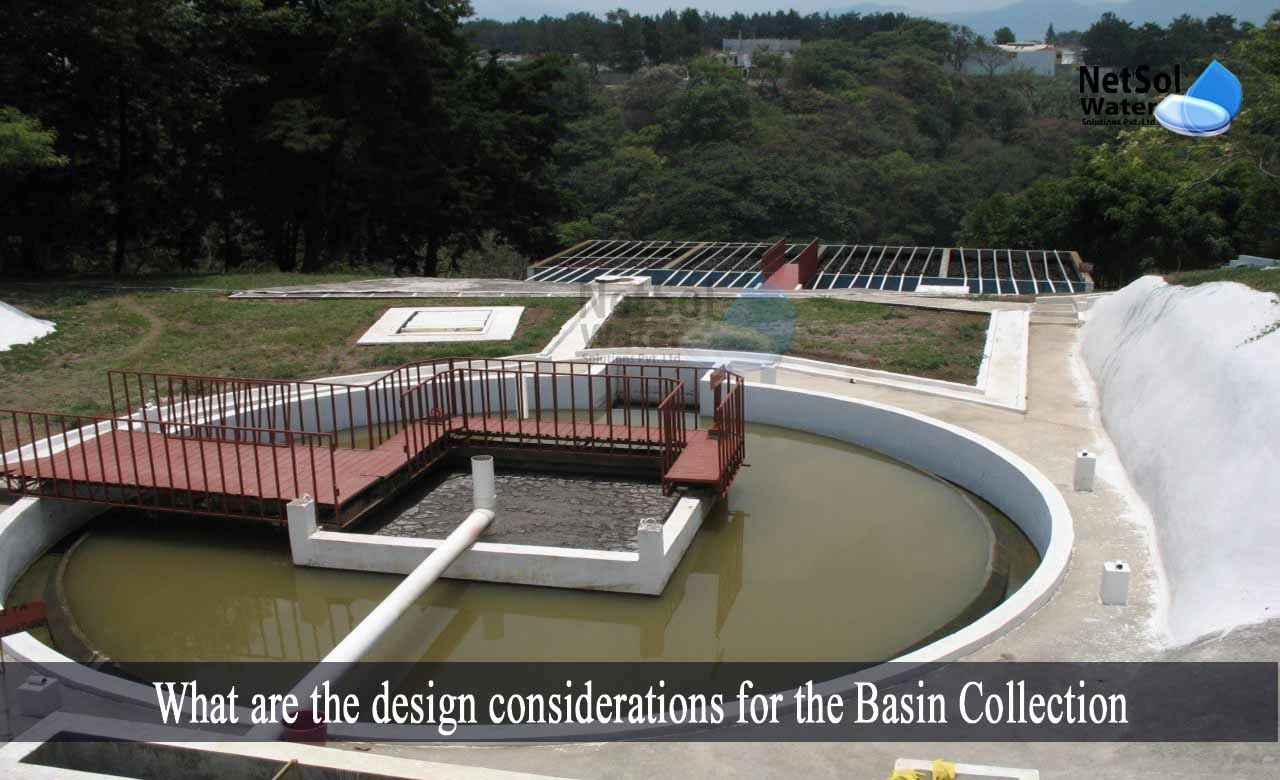The design of the basin collection troughs required by the many distinct basins in the treatment facility, is an important consideration when building a water or wastewater treatment plant. These collection troughs have a direct impact on the facility's process as well as its economic aspects.
Let us enlist the design considerations for the basin collection troughs.
What are the design considerations for the Basin Collection?
A decent layout can often help the project gain public acceptability. Think about the following:
· Locate the plant away from homes and other worried neighbours.
· Maintain some distance between your home and the nearest plant site (say 500 ft.).
· Construct odorous facilities farthest away from houses (i.e. headwork’s).
· Cover or house the odour-producing facilities, and provide adequate ventilation and air cleaning.
Sizing for Maximum Flow Rate
The collecting trough procedure comprises the requirement to handle a maximum particular flow rate. All basin collection troughs have one thing in common: they must be suitably sized so that the troughs' hydraulics does not interfere, with the intended unit process function and design.
The trough must be correctly built to prevent flooding of the weirs. If any of the weirs were to flood, the basin hydraulics would be disrupted, causing the individual unit process to suffer. Depending on the application, each basin necessitates a unique layout for the collection troughs.
Correct Economic Trough Sizing
Another, critical feature of the collection trough's design is cost. A trough should not be oversized because this will raise the overall cost of the project. A trough, on the other hand, should not be undersized because, this will have a negative impact on the project's process and the required head-loss.
An appropriate economic trough sizing should be a compromise between the economic cost of the trough, vs. the expense of handling excess flow and head-loss.
Planning Existing Installation Expansions
Many of the new treatment facilities being built are expansions of existing institutions. Because, the majority of existing treatment facilities are located on or near a receiving body of water, the outfalls are placed in accordance with the body of water's present water level. This outfall condition would affect all unit process basins upstream of the outfall structure, limiting or setting the available head.
If the treatment scheme does not have a head problem, a collecting trough that discharges into a collection/outlet channel will be in a free discharge condition. The water level will be roughly critical depth, when it flows into the outlet canal.
1.73 x the critical depth (Hc) can be used to calculate the upstream water depth (Ho).
Hc = [Q^2/gb^2]^1/3
Q in cfs; b in ft.; g=32.2
The usage of a free discharge system would result in the most cost-effective design, because it results in the smallest basin trough cross-section conceivable. However, this design makes use of the entire head.
How can we assist?
Netsol Water provide a wide range of modern solutions, including advanced water filtration plants, water softeners, wastewater treatment plants, sewage treatment plants, and much more. We also educate our clients on how to avoid pollution, by taking a sustainable strategy and utilizing advanced treatment methods.
Netsol Water is Greater Noida-based leading water & wastewater treatment plant manufacturer. We are industry's most demanding company based on client review and work quality. We are known as best commercial RO plant manufacturers, industrial RO plant manufacturer, sewage treatment plant manufacturer, Water Softener Plant Manufacturers and effluent treatment plant manufacturers. Apart from this 24x7 customer support is our USP. Call on +91-9650608473, or write us at enquiry@netsolwater.com for any support, inquiry or product-purchase related query.



